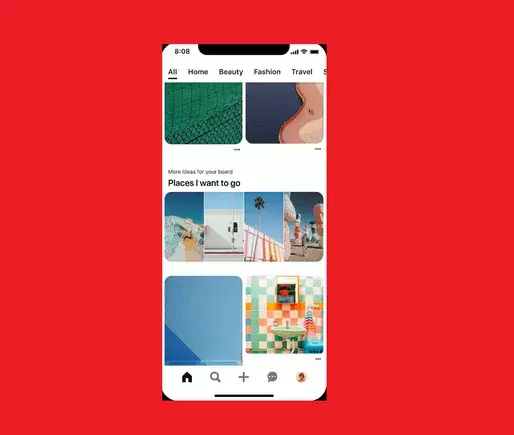Pinterest is continually evolving its platform to foster user engagement, and recent updates have introduced full-width feed modules that aim to enhance interaction in a visually appealing manner. These new module types have emerged in users’ Pinterest feeds, designed to not only captivate attention but also to encourage exploration of related topics and ideas. As the platform evolves, it becomes increasingly essential to understand how these innovations operate and what implications they have for both users and marketers alike.
Understanding the Module Types
Pinterest has implemented two distinct types of modules to serve different purposes within its ecosystem. The first is the Landing Page Module, which functions as a gateway to a dedicated space where users can delve into more content. Tapping on this module transports users to a landing page filled with various Pins, allowing for deeper engagement with the content that interests them. This is particularly beneficial for users seeking curated experiences or specific ideas related to their interests.
On the other hand, we have the Carousel Module. Unlike the landing page, this module features a horizontal display of selected Pins that users can swiftly scroll through. By offering a snapshot of multiple options at once, Carousel Modules encourage users to explore a range of ideas, thus broadening their perspectives and satisfying their curiosity without requiring them to navigate away from their current feed.
Engagement Optimization Techniques
One of the standout features of Pinterest’s update is its intelligent approach to user engagement through a personalized algorithm. The platform proactively monitors user interaction with the newly introduced modules, adjusting their display based on the likelihood of engagement. If a user demonstrates little to no interest in a particular module after repeated exposures, Pinterest’s algorithm opts to temporarily remove that module from the user’s feed. This employs a refined method of managing impressions and enhancing user experience by minimizing clutter and focusing on content that resonates.
Such a strategy could be a game-changer as it places a premium on user preferences and promotes a more engaging feed tailored to individual interests. Users are encouraged to interact with modules that genuinely pique their curiosity, fostering a more organic engagement cycle that potentially leads to longer browsing sessions and increased satisfaction.
Dynamic Display of Content
Moreover, Pinterest has adopted a unique approach to module placement that circumvents potential engagement cannibalization. Early implementations of fixed slots for modules meant that high-engagement Pins could be displaced by new content, leading to a less favorable user experience. However, Pinterest has cleverly shifted to a ‘skip slot’ approach. This method intelligently blends Pins and Modules, ensuring that a module occupies a slot only if it surpasses the predicted engagement of surrounding Pins.
Such an intricate balancing act between introducing new content and preserving user engagement exemplifies Pinterest’s commitment to a streamlined visual experience. The thought process behind this flexibility not only enhances user satisfaction but also provides valuable insights for marketers aiming to leverage the platform for brand engagement.
The Potential Impact on Marketers
These recent advancements in module functionality underscore an essential evolution in how content is presented and consumed on Pinterest. For marketers, understanding the dynamics of this shifting landscape is crucial. As the platform continues to refine how it displays related Pins and topics, marketers must adjust their strategies accordingly. The era of static, one-size-fits-all promotional content is fading, giving way to a more nuanced approach centered on user engagement and interactive experiences.
Consequently, marketers should prioritize high-quality, engaging content that aligns closely with the interests of their target audiences. By doing so, brands can effectively capitalize on the opportunities presented by these new modules, fostering an interactive environment where users are more receptive to discovering and engaging with their offerings.
In summation, Pinterest’s introduction of innovative feed modules marks a pivotal shift in enhancing user engagement through personalization and content curation. The implications of these changes extend beyond user experience, signaling a significant transformation for marketing strategies within the platform. Marketers must now adapt swiftly to this evolving landscape to effectively engage audiences in meaningful ways.

